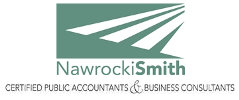How Much is a Business Worth?
Published: 4/26/2017 3:05:13 PM
The act or process of determining the value of a business enterprise or ownership interest therein is called “business valuation.”
It takes a high degree of skill and professional expertise to place a dollar value on businesses which are comprised of both tangible and intangible assets. Certified Public Accountants (CPAs) use a standard issued by the American Institute of Certified Public Accountants (AICPA) when conducting business valuations. The standard that CPAs use is called the Statement on Standards for Valuation Services No. 1 (SSVS1).
The valuation of closely-held businesses first became an issue as a result of Prohibition. In 1920, the Internal Revenue Service (IRS) developed ARM 34 to assist taxpayers in determining the amount of “intangible value” lost by the business previously involved in the alcohol beverage industry.
Prior to ARM 34 most businesses sold for tangible value only. ARM 34 introduced the following two key components:
- Goodwill exists if a business has excess earnings; and
- Goodwill value is determined by capitalizing excess earnings.
Eventually, “ARM 34 evolved into Revenue Rulings 59-60 which:
- Outlines methods and factors to be used in valuing closely-held businesses;
- Is widely accepted for both tax and nontax purposes;
- Provides valuation formulas/methods;
- Realizes that due to the facts and circumstances of the valuation other methods could be used; and
- States that “no useful purpose is served by taking an average of several factors (e.g., book value, capitalized earnings and dividends) and basing the valuation on the result.”
In 1968 Revenue Ruling 68-609 modified and expanded the scope of the previous ruling. It is often referred to as the “excess earnings method” or the “treasury method.” Revenue Ruling 68-609 introduced the formula method to determining value for goodwill and requires that the value of a business be based upon both assets and income.
Revenue Ruling 68-609 discussed the possible use of capitalization rates as follows:
- Tangible Assets - 8% - 10%
- Intangible Assets - 15% - 20%
Business valuations are used today for tax purposes, litigation (i.e., shareholder disputes, divorces, insurance claims), and a variety of business transactions, such as mergers and sales.
American business magnate and investor, Warren Buffett, once said: “It’s better to buy a wonderful company at a fair price than a fair company at a wonderful price.” A comprehensive business valuation is the only way to know the difference.
How much is your business worth?Nawrocki Smith LLP
290 Broad Hollow Road, Suite 115E
Melville, New York 11747
Email: info@nsllpcpa.com
Sign up for our newsletters
For Email Marketing you can trust.

